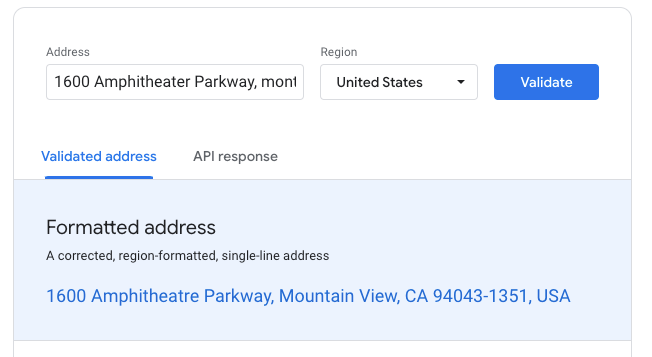Введение
API проверки адресов — это сервис, принимающий адрес. Он определяет компоненты адреса и проверяет их. Он также стандартизирует почтовый адрес и находит для него наиболее известные координаты широты и долготы. При желании для адресов в США и Пуэрто-Рико можно включить систему поддержки точности кодирования (CASS™) .Зачем использовать API проверки адресов
С помощью API проверки адресов вы можете повысить предсказуемость доставки и сократить количество сбоев, тем самым улучшая качество обслуживания клиентов. Вы выявляете неверные адреса и получаете более полную информацию об их характеристиках.
API геокодирования может лучше подойти вам, если вам не нужно проверять отдельные компоненты адреса. API геокодирования преобразует адреса в координаты широты и долготы. API проверки адресов проверяет корректность адресов. Подробное сравнение см. в разделе «Возможность проверки местоположения с помощью платформы Google Карт» в Центре архитектуры.
Что можно сделать с помощью API проверки адресов
С помощью API проверки адресов вы можете определить, относится ли адрес к реальному месту. Если адрес не соответствует реальному месту, API может выявить потенциально неверные компоненты, которые вы можете предоставить своим клиентам для исправления. Вот пример рабочего процесса с использованием API:
Клиент вводит адрес . На следующем изображении показана базовая форма, которая позволяет клиенту ввести адрес, возможно, в рамках процесса оформления заказа.
Приложение отправляет адрес в API — приложение передает этот адрес в качестве входных данных в API проверки адреса.
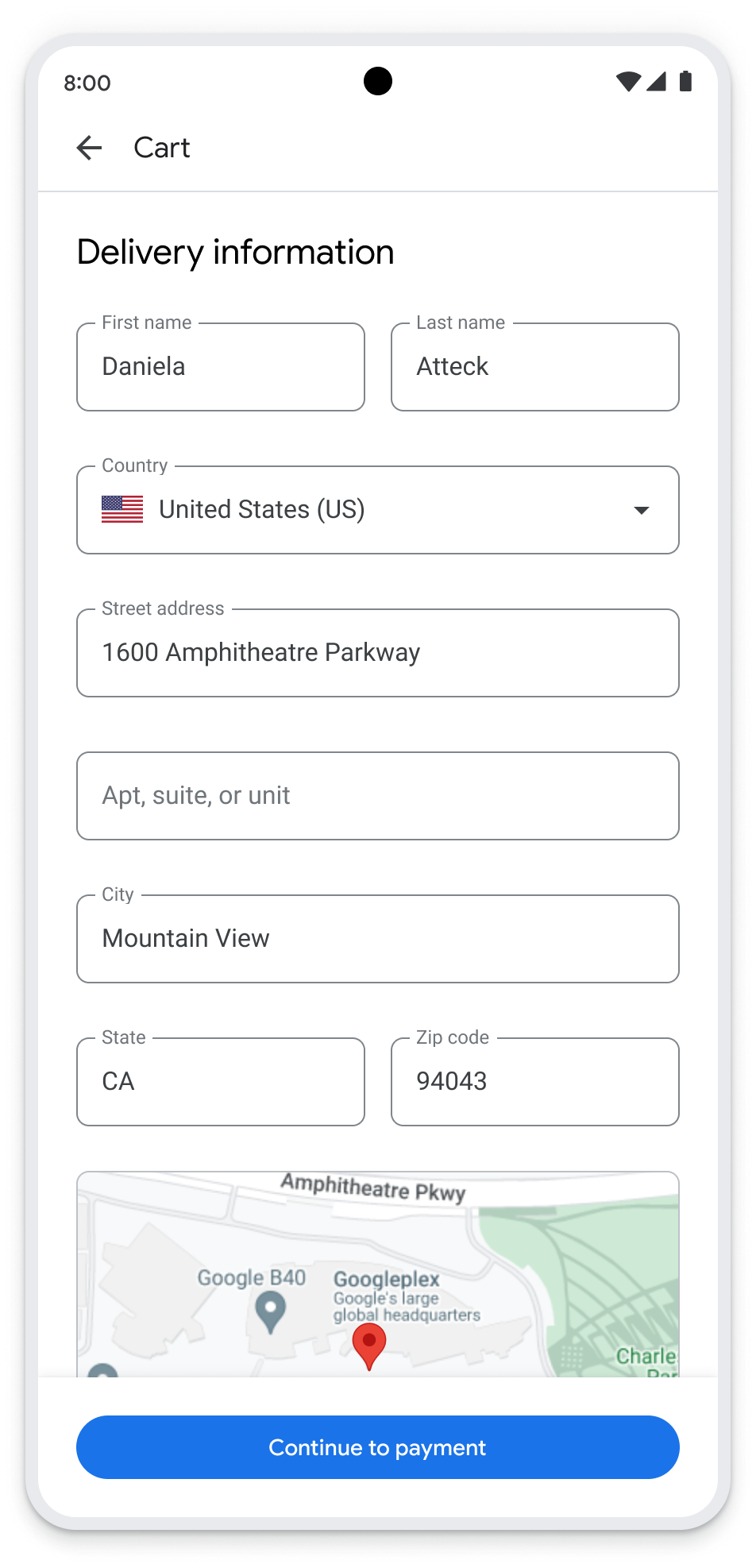
API проверяет и стандартизирует адрес . В своем ответе API проверки адреса возвращает полный адрес, определенный API, или указывает, где отсутствует информация.
Клиент подтверждает или исправляет адрес . В зависимости от того, что возвращает API, вы можете предоставить клиенту следующие запросы: A. Подтвердить рекомендуемый адрес. B. Предоставить недостающую информацию. C. Исправить адрес.
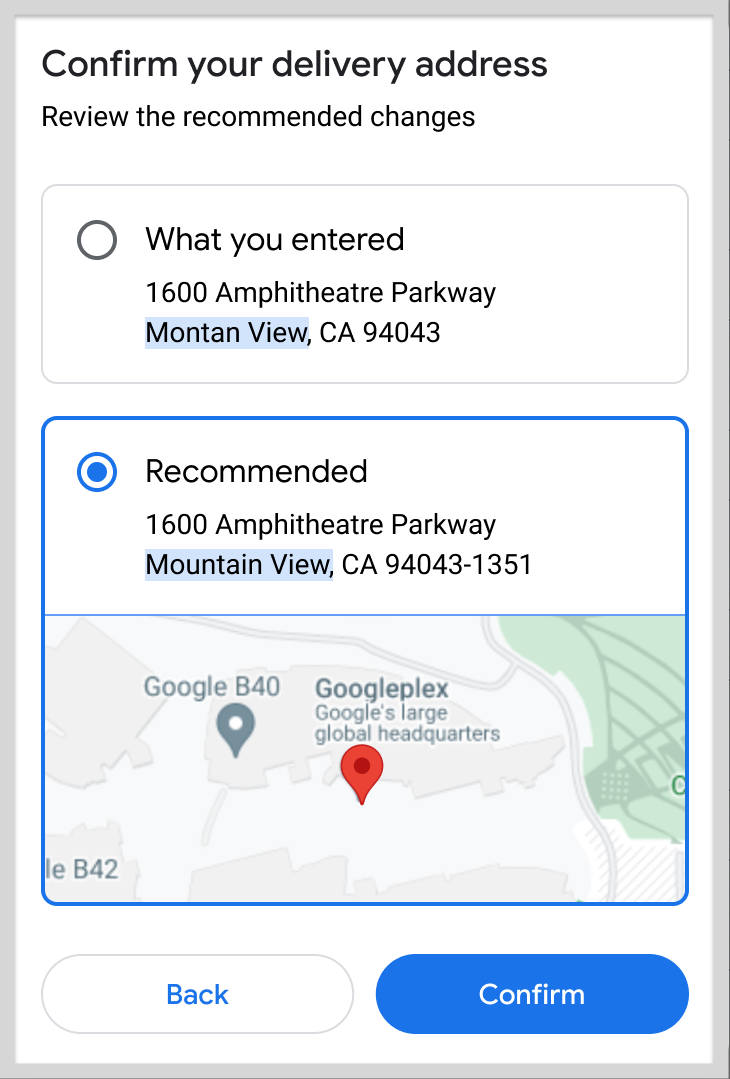
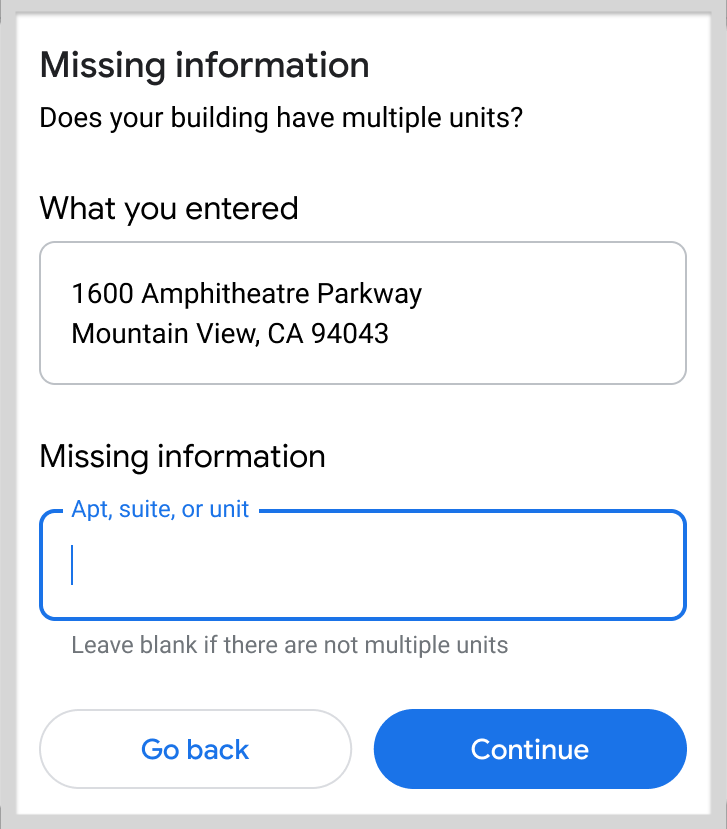
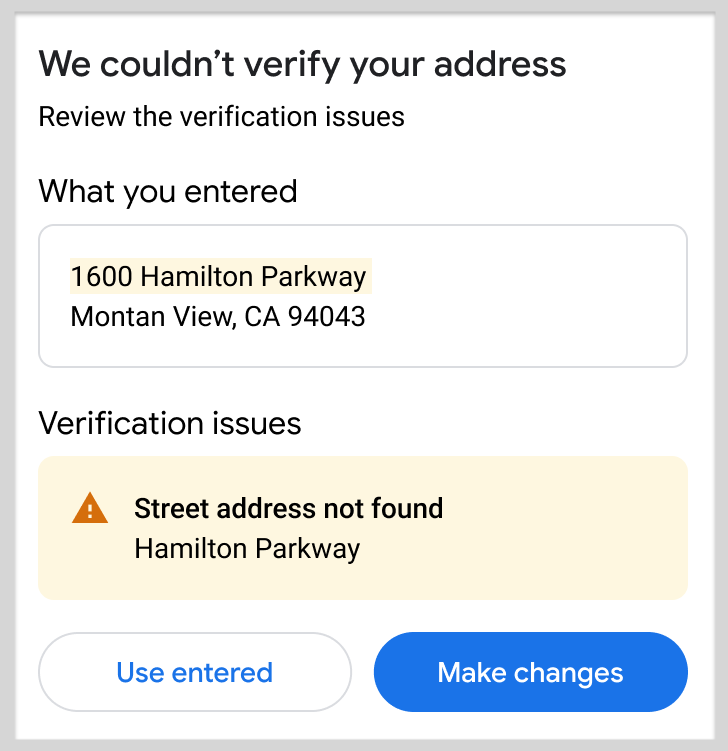
Как работает API проверки адресов
Валидация адреса принимает POST-запрос с адресом в формате JSON. Адрес разделяется на отдельные компоненты, а затем предпринимает следующие действия:
- Исправления — обеспечивает проверки на уровне компонентов, включая подсистемы, где это возможно.
- Завершает — пытается определить отсутствующие или неверные компоненты адреса.
- Форматы — очищает и стандартизирует формат компонентов адреса.
Ресурсы
В следующей таблице представлены ресурсы, доступные через API проверки адресов, а также возвращаемые им данные. Подробнее см. в справочнике по API проверки адресов .
| Ресурсы данных | Данные возвращены |
|---|---|
Компоненты адреса в формате JSON. См. Проверка адреса . | Полный, подтвержденный адрес (если возможно). Статус проверки каждого компонента адреса. Если доступно по адресу:
См. раздел Понимание ответа проверки . |
Как использовать API проверки адресов
| 1 | Попробуйте демо-версию | Ознакомьтесь с демонстрацией с различными формами адресов, как правильными, так и неправильными. Демонстрация предоставляет удобный способ изучить как возвращаемые сервисом значения, так и ответы API в формате JSON. |
| 2 | Проверить покрытие | Ознакомьтесь с подробностями покрытия , чтобы узнать, какие страны и регионы поддерживает API проверки адресов. |
| 3 | Настройте | Начните с настройки проекта Google Cloud и следуйте приведенным ниже инструкциям. |
| 4 | Запросить подтверждение адреса | Начните с базового адреса, а затем, для дополнительной точности, включите CASS (только для адресов в США и Пуэрто-Рико). См. раздел «Запрос подтверждения адреса». |
| 5 | Обработать ответ | Ответ API проверки адресов содержит два свойства, каждое из которых используется по-разному. См. раздел «Понимание базового ответа». |
| 6 | Повысить точность проверки | Вы можете помочь повысить точность адресов, оставив отзыв об ответах API проверки адресов. См. раздел Обработка обновлённых адресов . |
Доступные клиентские библиотеки
Список доступных клиентских библиотек для API проверки адресов см. в разделе Клиентские библиотеки .
О CASS™
Почтовая служба США® (USPS®) ¹ поддерживает Систему поддержки точности кодирования (CASS™) для поддержки и сертификации поставщиков услуг проверки адресов. Служба CASS Certified™, такая как API проверки адресов, получила подтверждение своей способности восполнять недостающую информацию в адресе, стандартизировать и обновлять её, предоставляя вам наиболее актуальный и точный адрес.
CASS отключен по умолчанию и поддерживается только для регионов «US» и «PR». Чтобы включить CASS, установите enableUspsCass в true в запросе на проверку. Подробнее см. в разделе Проверка адреса .
В рамках использования услуг USPS, USPS оценивает запросы на искусственно созданные адреса. Если USPS определяет, что введенный адрес является искусственно созданным, Google обязан прекратить проверку адресов клиента и предоставить USPS контактную информацию клиента (имя и адрес), соответствующий введенный адрес и агрегированные данные об использовании. Используя API, вы соглашаетесь с настоящими Условиями использования сервиса .
Что дальше?
- Попробуйте демо : Перейти к демо-версии
- Просмотреть зоны покрытия : Перейти к сведениям о странах и регионах покрытия
- Попробуйте сделать первый запрос на проверку : Перейти к разделу «Отправить запрос на проверку адреса»
- Обработка адресов в больших объемах : перейдите к разделу Использование API проверки адресов для обработки адресов в больших объемах.
Платформа Google Карт является неисключительным лицензиатом Почтовой службы США®. Следующие товарные знаки принадлежат Почтовой службе США® и используются с разрешения: Почтовая служба США®, CASS™, CASS Certified™. ↩


